
Why Clothing Brands Fail
Top Different Types of Shirts for Women and Men Top Different Types of Shirts for
The ultimate beginner’s guide on streetwear fabric Don't buy before you read this
Streetwear enthusiasts know that the right fabric can make or break a garment. From a rough and cheap look to a luxurious and expensive feel, the choice of fabric is crucial in creating the perfect streetwear outfit. But with so many different types of fabrics available, it can be overwhelming to choose the right one. That’s why it’s important to understand the characteristics of each fabric and what they can offer to your streetwear wardrobe.
First and foremost, it’s important to note that streetwear fabrics are not like your typical everyday fabrics. They’re designed to withstand the wear and tear of everyday life, while also providing comfort and style. Some of the most common street wear fabrics include denim, cotton, nylon, and polyester. Each fabric has its own unique properties that make it suitable for certain types of streetwear.
In this blog, we’ll dive into the world of streetwear fabric, exploring what it is, how it’s made, and why it’s so important in the world of fashion.
Streetwear fabric refers to a range of materials that are used to make streetwear clothing. These fabrics are often chosen for their durability, comfort, and unique aesthetic. Some of the most popular street wear fabrics include cotton, denim, nylon, polyester, and leather. Each material has its unique qualities, making it suitable for different types of streetwear garments.

Streetwear fabrics are a combination of style, function, and durability. The process of creating streetwear fabrics involves several steps that ensure the quality and performance of the final product.
The first step in creating streetwear fabric is designing the material. This involves choosing the right fibers and materials that will provide the desired properties of the final product. Designers consider factors like texture, color, pattern, and weight.
The next step is choosing the right fiber for the fabric. The choice of fiber determines the strength, breathability, and durability of the material. Common fibers used in street-wear fabrics include cotton, polyester, nylon, and spandex.
Once the fiber has been chosen, the next step is weaving or knitting the fabric. This involves interlacing the fibers together to create a solid fabric. The weaving or knitting technique used also determines the texture and weight of the final product.
The fabric is then dyed or printed with the desired design or color. This process can be done before or after the weaving or knitting stage. The type of dye or printing technique used will affect the final appearance and durability of the fabric.
The final step in creating streetwear fabric is finishing. This involves treating the fabric to achieve the desired properties such as softness, wrinkle resistance, or water-repellency. The finishing process also includes cutting, sewing, and assembling the fabric into the final product.
Streetwear fashion has evolved over the years, and one of the essential components of this fashion style is the type of fabric used. Streetwear enthusiasts appreciate high-quality street wear fabrics that make a statement while also providing comfort and functionality. With the plethora of fabrics available, it can be challenging to navigate through the options and make informed decisions. This guide is here to help you understand the pros and cons of different streetwear fabrics so that you can make informed choices when shopping.
Wool is a classic streetwear fabric that has been used for centuries due to its exceptional warmth and comfort. It’s a natural, renewable fiber that comes from the fleece of sheep, and is known for its insulating properties, making it perfect for colder climates. Wool fabrics can come in various weights and textures, from fine merino wool to thick, rugged tweed.
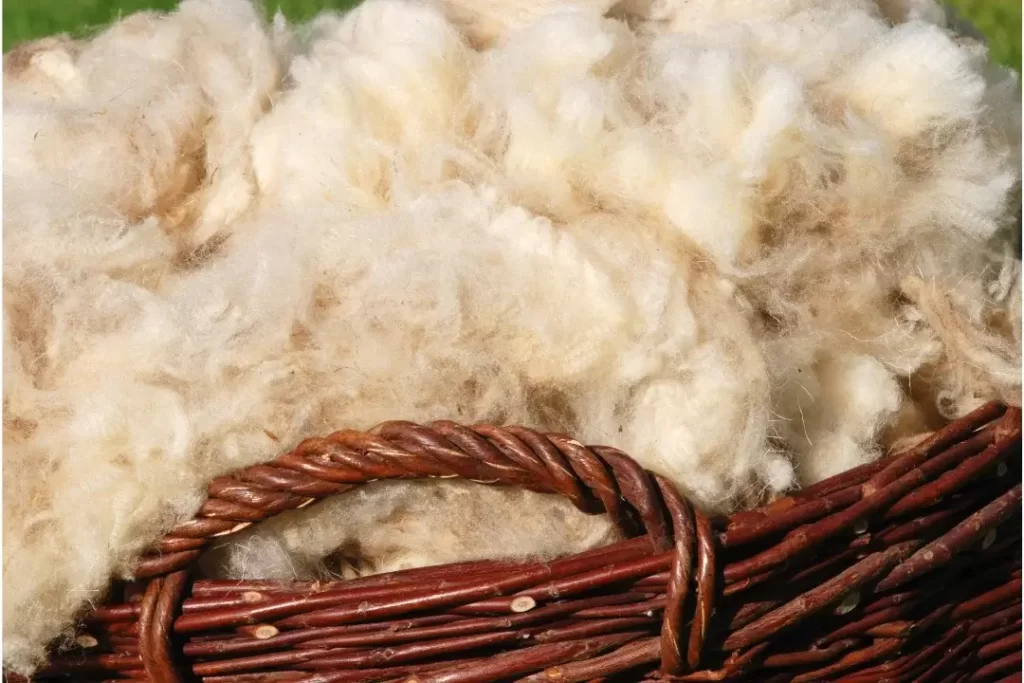
|
Advantages
|
Disadvantages
|
|---|---|
|
Exceptional warmth and comfort
|
Can be itchy for some people
|
|
Breathable and moisture-wicking
|
May require special care when washing
|
|
Naturally fire-resistant
|
May shrink if not washed properly
|
|
Durable and long-lasting
|
|
Cotton is one of the most popular streetwear clothing fabrics, known for its softness, breathability, and versatility. It’s a natural fiber that comes from the cotton plant and is prized for its ability to keep the wearer cool and comfortable in warm weather. This bottom-weight fabric comes in a variety of weights and textures, from lightweight voile to thick, cozy fleece.

|
Advantages
|
Disadvantages
|
|---|---|
|
Soft and comfortable
|
Can wrinkle easily
|
|
Breathable and moisture-wicking
|
May shrink if not washed properly
|
|
Easy to care for
|
May fade over time
|
|
Versatile
|
Less insulating than wool
|
Corduroy, a fabric distinguished by its unique raised cord or wall texture, has been around since ancient Egypt in 200 BC and continues to be a popular choice today. This ridged material is made up of a woven pile-cut yard that is then cut into cords or wales, forming vertical ribs. Its exceptional twill weave texture results in a thick and hardy fabric that is both warm and durable.

|
Advantages
|
Disadvantages
|
|---|---|
|
Durable
|
Prone to shrinkage - avoid high-temperature washing
|
|
Soft and comfortablec
|
Thick and heavy
|
|
Interesting texture
|
|
|
Easy to care for
|
|
Jersey, also known as single knit, is one of the most basic forms of weft knitting and is a popular and versatile choice for clothing in the fashion industry. The lightweight fabric is known for its stretchiness and close knits, and it is highly absorbent and breathable, making it an excellent option for activewear, t-shirts, underwear, and baby clothes.

|
Advantages
|
Disadvantages
|
|---|---|
|
Stretchy
|
Prone to piling
|
|
Versatile
|
May snag
|
|
Wrinkle-resistant
|
|
|
Lightweight yet durable
|
|
A heavier and thicker version of the jersey fabric, heavyweight jerseys retain their highly absorbent and breathable qualities despite their thickness, providing an extra plush and cozy option for sweatshirts, sweatpants, and hoodies. As a streetwear hoodie fabric, its also a great choice for garments that provide warmth in cooler climates. That makes it a good fabric for extremely thick fabric streetwear hoodies.

|
Advantages
|
Disadvantages
|
|---|---|
|
Breathable
|
Can feel warm in tropical climates
|
|
Warm and insulating
|
|
|
Wrinkle-resistant
|
|
|
Sturdy yet flexible
|
|
Interlock, a variation of rib knit, is constructed with a double-knit method, resulting in a thicker, soft, insulating, firm, and absorbent fabric. Despite being heavier, thicker, and firmer than single jerseys, the interlock fabric remains breathable, feeling soft and light, making it an ideal choice for activewear and undergarments.

|
Advantages
|
Disadvantages
|
|---|---|
|
Soft and comfortable
|
May have a tendency to snag, fuzz, or pill
|
|
Reversible and smooth
|
|
|
Thicker fabric type
|
|
|
Naturally stretchy
|
|
|
The same texture on both sides
|
|
|
Does not roll and curl at the edges
|
|
French terry fabric appears to be an ordinary jersey fabric, but it has a unique looped backing on the inside that gives it an alternative name, the loopback. It is lighter than traditional sweatshirt fabrics and is perfect for sportswear as it provides warmth without adding bulk. The moisture-wicking properties of French terry fabric make it an ideal choice for light layering. If you want to see our french terry hoodies wholesale.

|
Advantages
|
Disadvantages
|
|---|---|
|
Lightweight
|
Prone to Pilling
|
|
Moisture-wicking
|
|
|
Easy care
|
|
|
Wrinkle-resistant
|
|
Fleece fabric is a man-made synthetic product that is made from polyester. The fabric is woven into a light fabric that is brushed to increase fiber volume and provide plush and cozy insulation. Its moisture-resistant properties make it a popular choice for cooler weather and sportswear, wicking perspiration and allowing air to circulate to keep the skin comfortable and dry.

|
Advantages
|
Disadvantages
|
|---|---|
|
Soft, warm, and cozy
|
Attrack lint and dust due to high static electricity
|
|
Versatile and dynamic
|
can't be washed, tumble-dried, or ironed at high temperatures
|
|
Wrinkle-resisteance
|
|
|
Good insulation
|
|
Pique is a double-weave cotton fabric with raised parallel cords or fine ribbing that give it a distinctive embossed appearance. It has a more formal presentation than jersey fabrics, and its advantageous texture and weave type conceals and shows less sweat. Additionally, it is breathable, durable, and easy to care for, which is why it’s commonly used for sportswear.

|
Advantages
|
Disadvantages
|
|---|---|
|
Breathable and airy
|
can be prone to wrinkling
|
|
formal look with the weave and knit type
|
|
|
Durable and long-lasting
|
|
|
Shiws less sweat
|
|
Mesh fabrics are characterized by their net-like open pattern, lightweight heft, and permeable texture. They are woven or knitted loosely, resulting in an open-hole structure that provides breathable ventilation while remaining durable against ripping or tearing, making it an excellent choice for sportswear and warm climates.
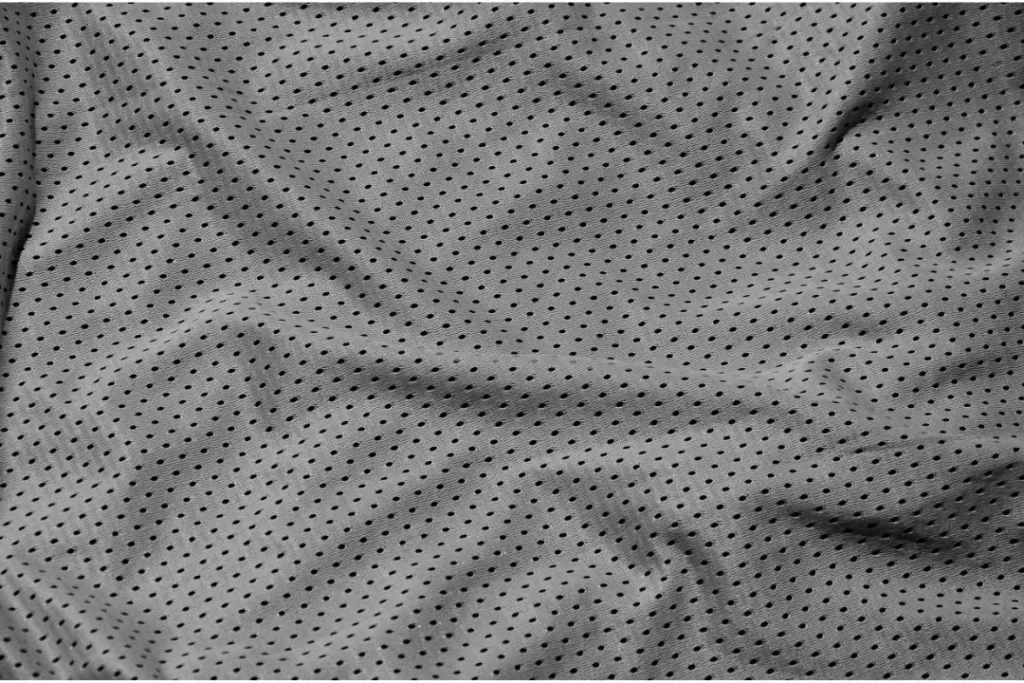
|
Advantages
|
Disadvantages
|
|---|---|
|
durable and resistant to rip/tears
|
holes in mesh fabric can easily catch onto things and snag if not careful
|
|
Allows for ventilation
|
|
|
Mildew resistant
|
|
|
Lightweight, breathable
|
|
Poplin is a ribbed variation of the plain weave fabric, known for its softness, durability, and high density. poplin fabric construction has a weaving structure and high density, which make the fabric reversible and give it a distinctive luster. Poplin is lightweight, wrinkle-resistant, easy to iron, and breathable, making it a popular choice for shirts and upholstery.

|
Advantages
|
Disadvantages
|
|---|---|
|
luxurious sheen
|
fabric is thin and may not provide enough insulation for cooler climates
|
|
Wrinkle and crease resistant
|
|
|
Easy to iron
|
|
|
Breathable
|
|
Oxford fabric is a high-quality choice for shirts that were created in 19th-century Scotland. It features a basketweave structure made by weaving multiple yarns together in a crossed vertical and horizontal direction. Thin yarns are woven over a thicker filler yarn, with threads passing in one direction dyed while the others are left white, creating a thicker fabric with a fine texture and unique checkerboard appearance. Oxford fabric is lightweight, lustrous, and soft, and it ages well and gets softer with use. It is wrinkle-resistant, resistant to damage and wear, and versatile.

|
Advantages
|
Disadvantages
|
|---|---|
|
wrinkle-resistant
|
thicker compared to other shirting fabrics
|
|
ages well and gets softer with use
|
insulating properties can make it less breathable in hot climates
|
|
Resistant to damage and wear
|
not suitable for formal attire
|
|
durable and versatile
|
|
Chambray is a plain weave fabric that is lightweight, breathable, and bears a visual resemblance to denim. Its multicolored yarn arrangement gives it a slightly faded appearance, with a smooth and soft feeling against the skin due to its tight weave. Chambray is a great fabric choice for summer clothing such as shirts, summer dresses, and skirts.

|
Advantages
|
Disadvantages
|
|---|---|
|
very breathable, great for summer
|
100% cotton chambray fabrics have a tendency to wrinkle
|
|
soft and lightweight
|
|
|
A great alternative to denim
|
|
|
stretchy, strong, and tera-resistant
|
|
Suede is derived from the underside of animal skin, and unlike leather, it is derived from the top side. Suede is a durable and comfortable hide option that feels much softer against the skin. Its napped and fuzzy characteristic provides an interesting appearance, but its permeable quality lacks the waterproofing benefits of leather. Suede became popular in the twentieth century and is associated with luxury due to its soft, delicate feel.

|
Advantages
|
Disadvantages
|
|---|---|
|
very durable and tough
|
can be difficult to care for
|
|
long-lasting
|
poor reistance to stains, dust, and dirt
|
|
interesting napped appearance and texture
|
|
|
soft and luxurious touch
|
|
Drill fabric is a versatile and durable street-wear fabric material that offers an interesting texture with its diagonally woven appearance and strong twill weave. It is also known as chino fabric and has a mercerized surface that lends a smooth and soft appearance and texture to the fabric. Its weaving structure imparts durability and abrasion resistance, making it an ideal fabric for various types of clothing including shirts, safari jackets, sneakers, uniforms, and chef coats.
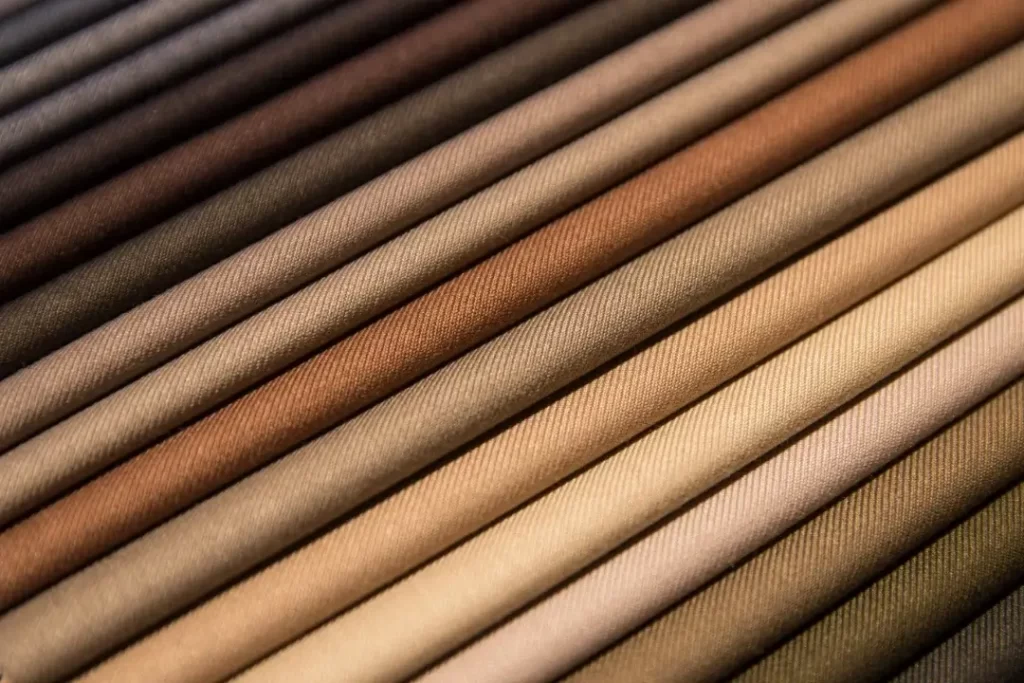
|
Advantages
|
Disadvantages
|
|---|---|
|
versatile and study
|
prone to shrinkage if not washed correctly
|
|
long-lasting and holds up well to wear and tear
|
recommended for: pants, jackets, best fabric for streetwears
|
|
comfortable and breathable
|
|
|
Tough and high strength
|
|
Denim is a classic street-wear fabric that has been a staple in the fashion industry since the 19th century. This sturdy cotton twill fabric is known for its signature blue hue and diagonal ribbing, which creates a unique texture. The weave of denim is tight, making it extremely durable and long-lasting. It’s often used in streetwear for its rugged, casual look and versatility. Learn more about Denim.

|
Advantages
|
Disadvantages
|
|---|---|
|
Durable and long-lasting
|
can be stiff and uncomfortable at first
|
|
Easy to care for
|
may bleed dye in the wash
|
|
versatile
|
may shrink if not washed properly
|
|
a classic, timeless look
|
|
Twill is a sturdy, plain-weave fabric that showcases a unique pattern of diagonal parallel ribs. Its tightly packed yarns create a durable material that is renowned for its ability to withstand wear and tear. With its front side being more visually attractive, durable, and pronounced, twill is a popular choice for work clothing, trousers/pants, and upholstery. Denim, chino, drill, herringbone apparel fabric, and gabardine fabrics are all types of twill.
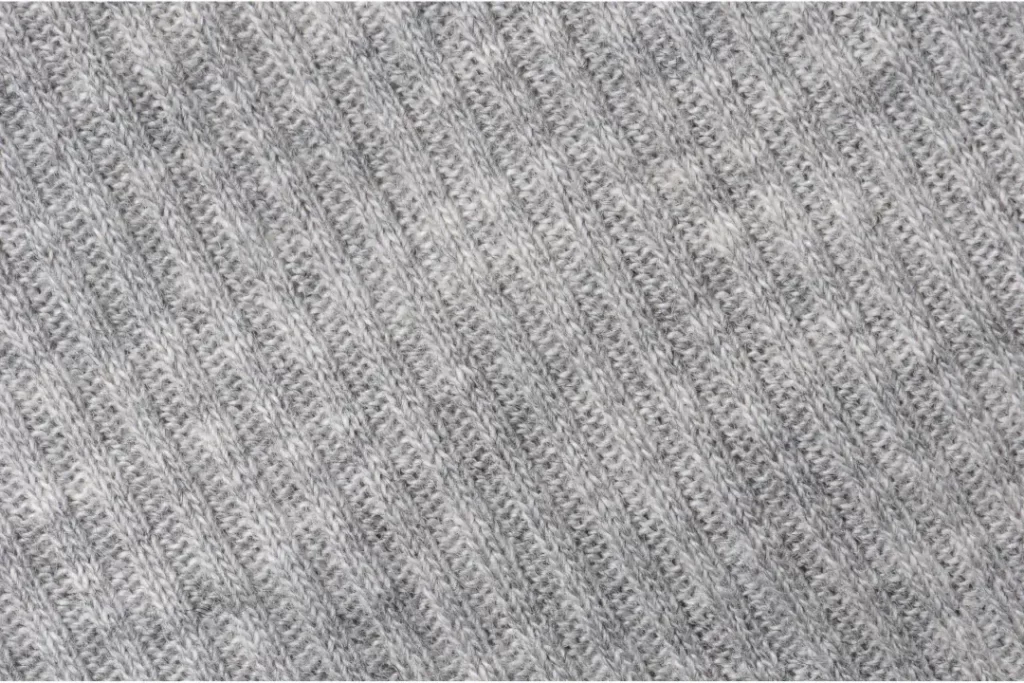
|
Advantages
|
Disadvantages
|
|---|---|
|
exceptionally durable
|
prone to wrinkling
|
|
wrinkle-resistant
|
may shrink if not washed correctly
|
|
opaque
|
may shrink if not washed properly
|
|
stain-resistant
|
|
Nylon is a synthetic polymer fabric made from long-chained carbon-based molecules. Originally used as a silk alternative for stockings, it is now one of the most widely used fabrics thanks to its versatility. This fast-drying material is strong, durable, lightweight, and tear-resistant, making it an excellent option for water-resistant garments. It is also highly receptive to color dyes, allowing for a range of eye-catching colors and styles.

|
Advantages
|
Disadvantages
|
|---|---|
|
very durable
|
can melt with heat, so avoird ironing
|
|
wrinkle-resistant
|
non-absorbent
|
|
abrasion and wear-resistant
|
may shrink if not washed properly
|
|
lightweight
|
|
Polyester is a popular synthetic fabric for its durability, affordability, and versatility. Its strong fibers create a material that is tear, stretch, pill, and abrasion-resistant, making it a favorite choice for clothing and gear like backpacks and camping tents. It also resists moisture, making it stain-resistant. When blended with cotton, it becomes even more durable, wrinkle-resistant, and shrink-resistant.

|
Advantages
|
Disadvantages
|
|---|---|
|
durable
|
Less suitable for sensitive skin
|
|
versatile
|
contains plastic fibers
|
|
moisture-wicking
|
|
|
easy-care
|
|
|
wrinkle-resistant
|
|
The main difference between twill and wool is the type of fiber used. While twill can be made from a variety of fibers, wool is exclusively made from sheep’s wool. Additionally, twill fabrics can be woven in a variety of weights and textures, while wool fabrics have a specific soft and warm texture. Another difference between twill and wool is their use. Twill fabrics are commonly used for making pants and jackets, while wool fabrics are mostly used for winter clothing items such as coats and sweaters.
In summary, while twill and wool are both versatile fabrics, they differ in the type of fiber used, texture, and use.
Jeans and denim are two terms that are often used interchangeably, but they are not the same thing. Although they are related, there are distinct differences between the two. Denim is a sturdy cotton twill fabric that is woven with a diagonal ribbing pattern. The fabric is usually made with indigo streetwear fabric dye, which gives it its characteristic blue color. Denim has been used for centuries, and it was originally made for workwear and clothing for laborers due to its durability. Jeans, on the other hand, are a type of pants made from denim fabric. Jeans are characterized by their specific cut, which includes a fitted waist, a straight or tapered leg, and five pockets. Jeans are a popular casual fashion item and are worn by people of all ages and genders.
One of the main differences between jeans and denim is that denim is a fabric, while jeans are a type of garment. Jeans are made from denim fabric, but not all denim fabric is used to make jeans. Denim is also used to make other types of clothing, such as jackets, skirts, and shorts.
Denim and twill are two types of fabrics that are often confused with each other. While they have some similarities, there are distinct differences between the two. Denim is a sturdy cotton twill fabric that is woven with a diagonal ribbing pattern. The fabric is usually dyed with indigo, which gives it its characteristic blue color. Denim is commonly used to make jeans and other durable clothing items. Twill, on the other hand, is a type of fabric characterized by its diagonal weave pattern. Twill fabrics can be made from a variety of fibers, including cotton crepe material, wool, and silk. Twill fabrics are often used to make pants, jackets, and suits. The main difference between denim and twill is the diagonal ribbing pattern found in denim. While twill also has a diagonal weave street-wear fabric patterns, it is not as prominent as in denim. Additionally, denim is usually made from cotton, while twill can be made from a variety of fibers.
Another difference between denim and twill is their texture. Denim is usually thicker and stiffer than twill, making it more durable and suitable for heavy-duty clothing. Twill, on the other hand, can be made in a variety of weights and textures, making it suitable for a wider range of clothing items.
Experto is a renowned name in the fashion industry when it comes to streetwear clothing and fabrics. As a leading manufacturer and supplier of street-wear fabrics, Experto has established itself as one of the most reliable and trusted names in the market. Whether you are a business owner, a startup, or an individual looking to purchase street-wear fabrics in bulk, Experto has got you covered. At Experto, we believe that the right fabric is the foundation of every great garment. This is why we have invested heavily in our production facilities and manufacturing processes to ensure that we deliver the highest quality street-wear fabrics to our customers. From cotton to denim and everything in between, we offer a wide range of fabrics that are perfect for creating trendy and stylish streetwear clothing.
We offer competitive pricing and flexible terms to ensure that our customers can purchase the fabrics they need without breaking the bank. Whether you need a few yards or a few thousand yards, we have the capacity to meet your needs and deliver your order on time.

Selecting the ideal fabric is vital to crafting a flawless streetwear look. Street wear fabrics are created to endure daily wear and tear while still providing style and comfort. It’s important to comprehend the traits of each fabric and how they contribute to your streetwear wardrobe since there is a vast variety of fabrics available. Wool, cotton, corduroy, denim, nylon, polyester, and many others are the most prevalent streetwear fabrics, each with unique properties that make it suitable for specific types of garments. Understanding the process of creating street-wear fabrics aids in appreciating their quality and performance. This guide has discussed the advantages and disadvantages of various street-wear fabrics, making it easier to make informed shopping decisions. Opting for the right streetwear fabric can make a significant difference in designing a trendy and practical ensemble that reflects personal style.
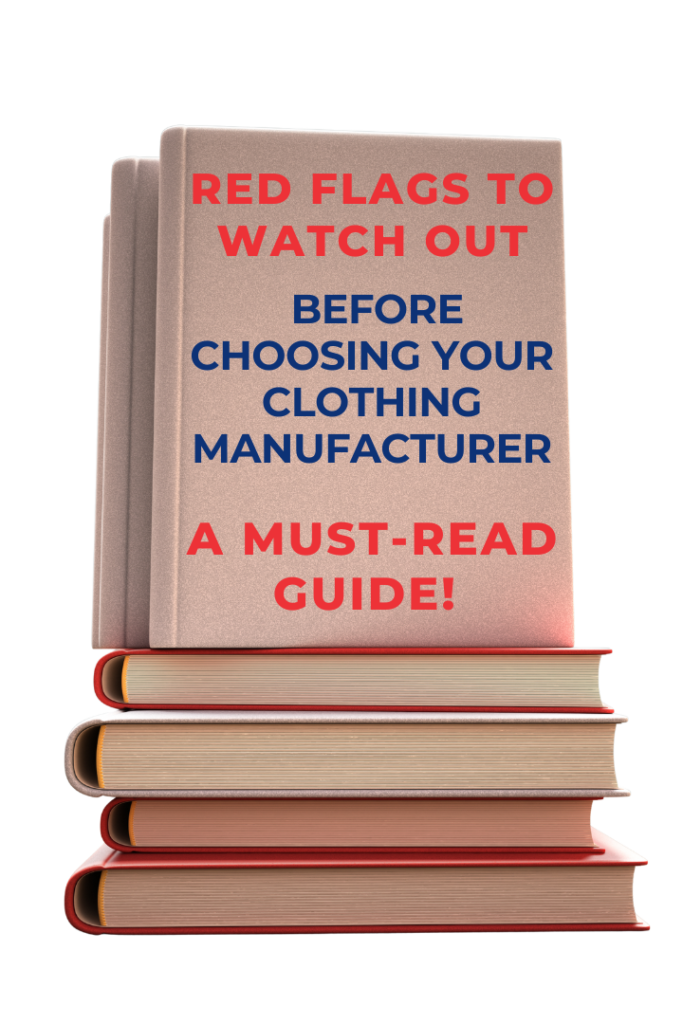
ALARMING MISTAKES!
TO AVOID WHEN FINDING YOUR CLOTHING MANUFACTURER: THE ULTIMATE GUIDE FOR SUCCESS!
Twill cotton is a type of fabric that has a diagonal weave pattern, resulting in a durable and wrinkle-resistant fabric commonly used for clothing, including pants, jackets, and suits.
Poly poplin fabric is a type of polyester fabric that has a plain weave pattern and slightly reflective fabric streetwear. It is often used for tablecloths, drapes, and clothing lining due to its durability and ease of care.
Yes, duck canvas can be painted using acrylic or oil paints. It is a popular choice for painting canvases and outdoor murals due to its sturdy and durable nature.
Twill and poplin fabrics have different characteristics that make them better suited for different uses. Twill is a durable fabric with a diagonal weave pattern that is often used for heavy-duty clothing, while poplin is a lightweight, smooth fabric that is often used for dress shirts and blouses.
The best type of wool for suits depends on personal preference and the climate in which the suit will be worn. Some popular options include super 100s and super 120s wool, which are fine and lightweight, and tweed, which is heavier and more durable.
Twill silk is a type of silk fabric that is woven with a diagonal ribbing pattern, similar to twill cotton. It is often used for high-end clothing items, such as suits, dresses, and ties.
The best fabrics to wear depending on the weather and the occasion. Generally, breathable fabrics like cotton, white cotton linen fabric, and printed cotton silk fabric are great for warmer weather, while wool and cashmere are better suited for colder weather. Polyester and blends are often used for athletic wear due to their moisture-wicking properties.
Expert Custom Clothing Manufcaturer

Top Different Types of Shirts for Women and Men Top Different Types of Shirts for

What You Must Know About Clothing Samples? Before You Produce a Single Garment: What You

How Much Does It Cost To Make a Hoodie A Complete Cost Breakdown for Custom

Discover the Types of Buttons Discover the Types of Buttons That Transform Style and Functionality
Most Recent Posts
Expert Custom Clothing Manufcaturer
Join our Mailing list!
Get all latest news, exclusive deals and updates.